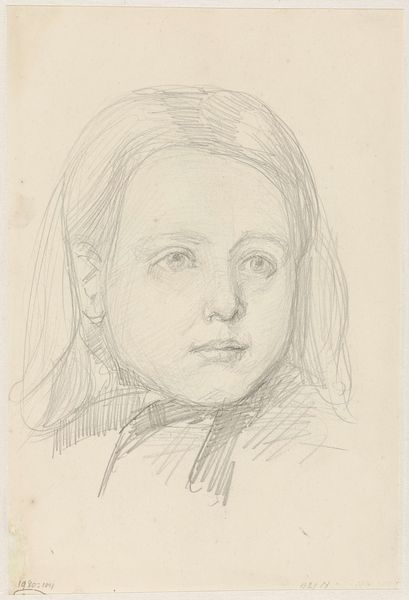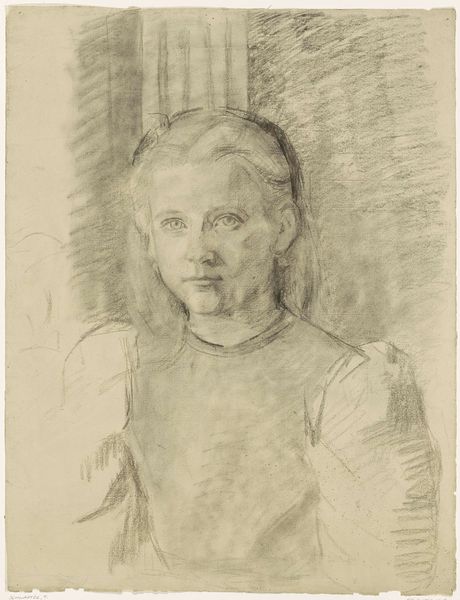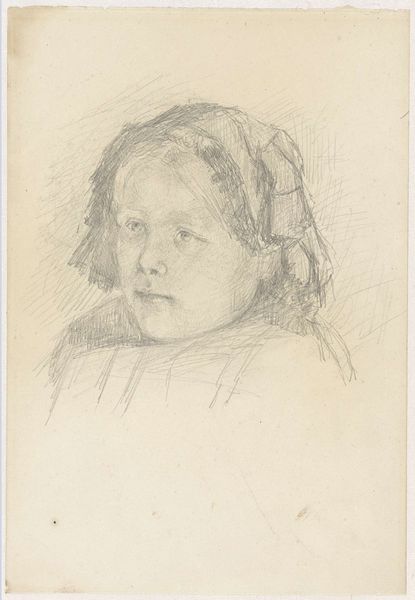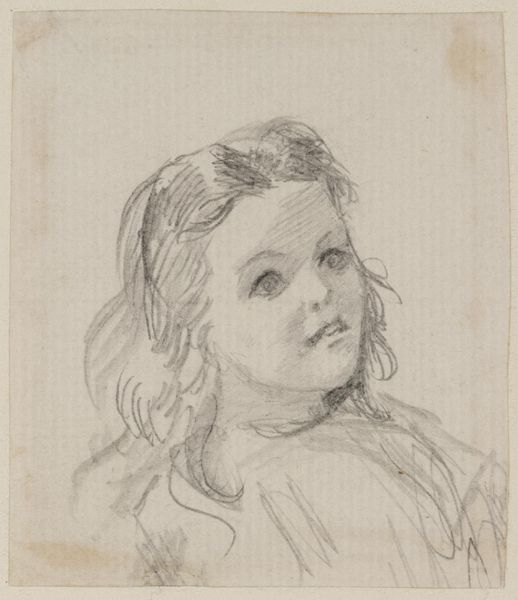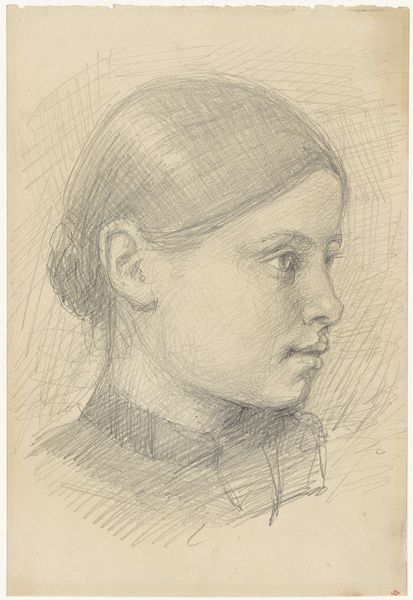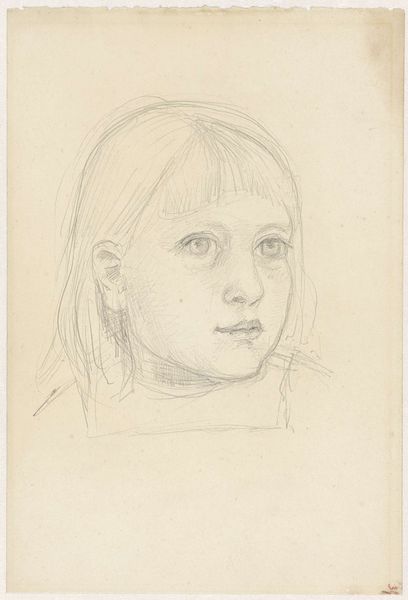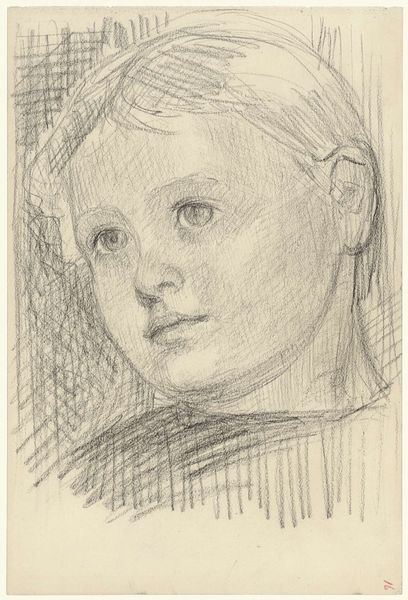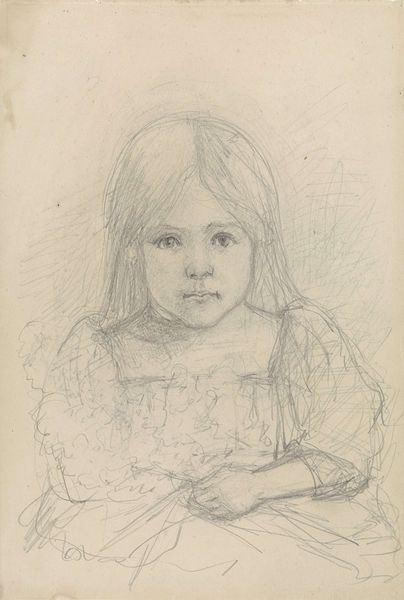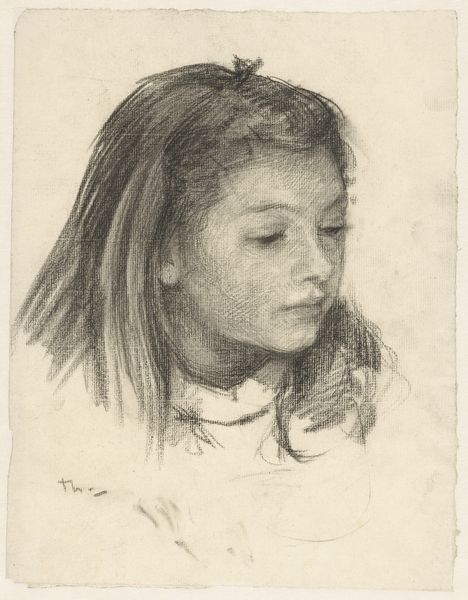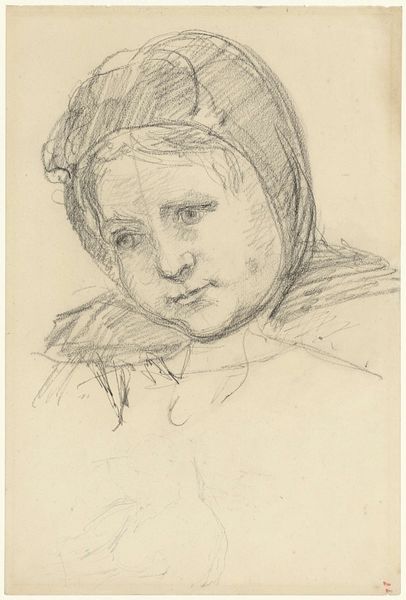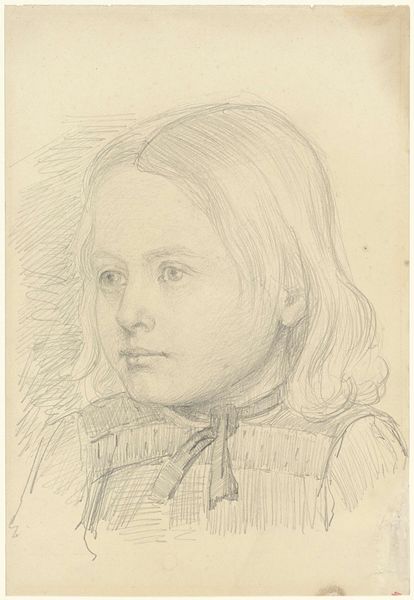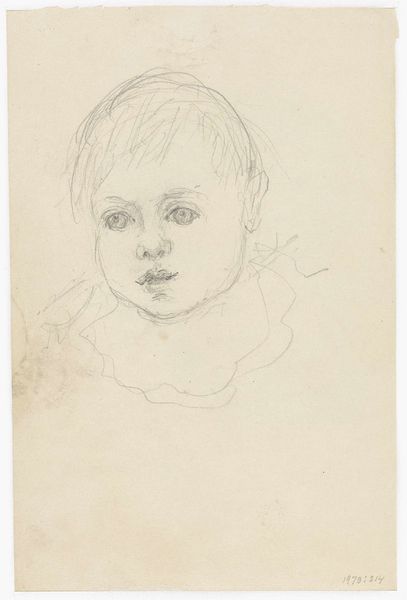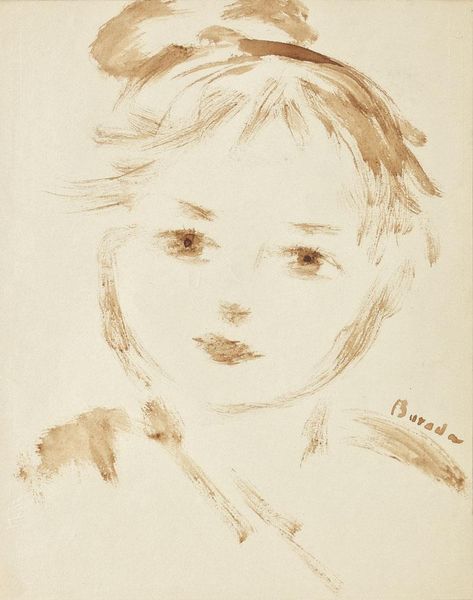
drawing, pencil
#
portrait
#
drawing
#
impressionism
#
pencil drawing
#
pencil
#
portrait drawing
#
academic-art
#
realism
Dimensions: height 302 mm, width 207 mm
Copyright: Rijks Museum: Open Domain
Curator: This pencil drawing, delicately rendered, is titled "Portrait of a Girl with Bow in Her Hair," crafted by Jozef Israëls, likely between 1834 and 1911. It’s part of the Rijksmuseum collection. What strikes you initially about it? Editor: There’s an immediacy to it. It feels like a fleeting glimpse of a child caught between girlhood and something more. There’s a certain weight in her eyes, a pensiveness that seems at odds with the ribbon in her hair. Curator: Indeed. Look closely at the varying pressure he applies with the pencil. The darker shading defines the form of her clothing and contours of her face, while softer lines capture the texture of her hair. Considering Israëls' background, coming from a modest Jewish family and experiencing early financial struggles, what socioeconomic narratives might be at play here? Editor: Absolutely, we can explore that. It’s fascinating how this seemingly simple portrait engages with questions of childhood and representation. There’s this tension, isn't there, between the idealized depiction of children prevalent in art and the lived realities of children, especially working-class children, during that period? Were child labor laws in place then? How might her expression reflect the social constraints and limited opportunities afforded to girls of her social standing? Curator: A key element to note is how the artist used a simple medium like pencil to create a work that, despite its modest materials, conveys a depth of emotion. The artistic skill involved should be seen within the market context. Consider also Israëls' later shift toward more explicitly social themes. Did this portrait serve as a preparatory study or an exploration of form before that turn? Editor: The act of portrayal itself is significant, as it immortalizes someone whose stories may otherwise go unheard. It also begs questions about who has historically been deemed worthy of artistic representation and who has been excluded. What about intersectional oppressions related to religion during that time in Dutch society? Curator: Thinking about the subtle way the artist built up the tones on paper, what can it suggest about his understanding and application of this medium in depicting human expression, and maybe something of Israëls as a product of society at the time? Editor: Well, in viewing it, it challenges us to confront uncomfortable truths about power, privilege, and the silencing of marginalized voices within artistic canons and historical records. It reminds us of our responsibility to interrogate whose stories are being told and whose are being erased in museums. Curator: Exactly. Understanding the materials and Israëls’ process deepens our appreciation. Editor: And understanding the broader social context ensures this isn't just about artistic technique, it's about social consciousness.
Comments
No comments
Be the first to comment and join the conversation on the ultimate creative platform.
